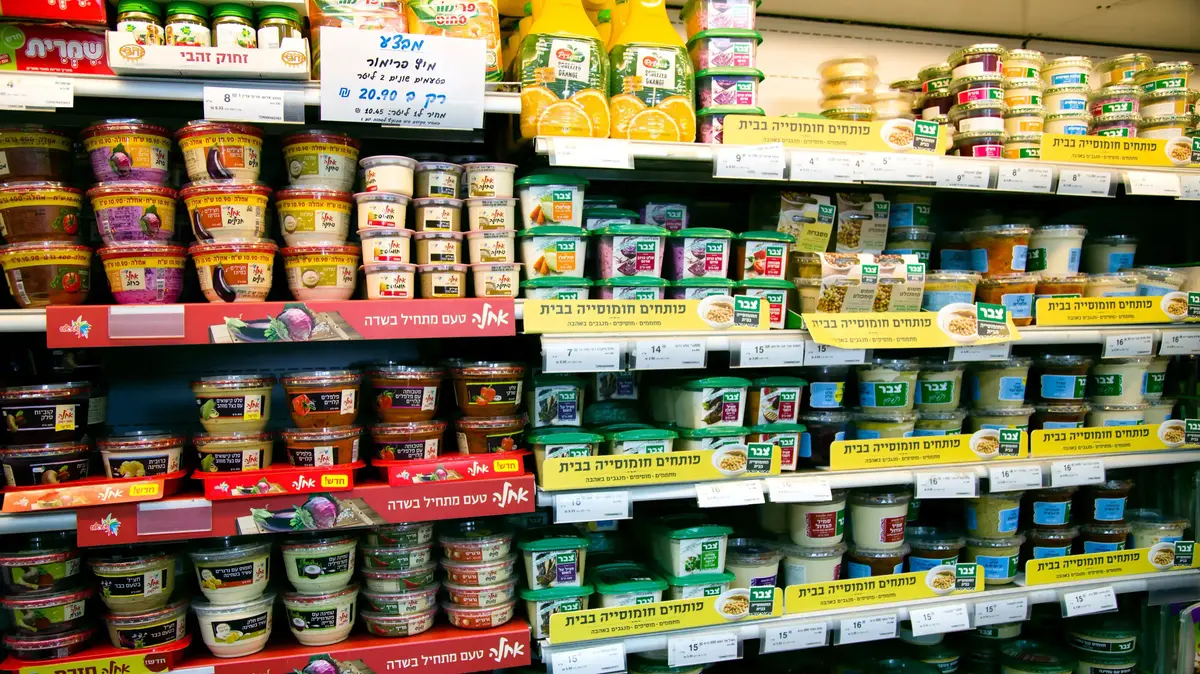Schnitzel in a baguette from the hot baguette restaurant in Netanya.
Within 5 years, the prices of schnitzel in a baguette rose by nearly 60% (Photo: Nimrod Saunders)
Israeli cuisine is a grouping of postcards that brought to our country a variety of cultures and tastes, some of which underwent a small local twist and received permanent residency in every home.
The Egyptian falafel, the Arab salad, the Turkish shawarma and the Viennese schnitzel, have all become Israeli.
Without prejudice to all the others, the schnitzel (Kotita, in Hebrew), which was converted from veal or pork to chicken meat, was a symbol of the original popular cuisine: you will find it starring during lunch breaks in eateries in industrial areas, as a Friday chopper for soldiers who stayed in the army on Saturday, in restaurants that were for meetings Israeli travelers all over the world, from Kathmandu to Lima and, of course, at the Shabbat table of many of us.
It is loved by children, a guilty pleasure in the eyes of adults - and it seems that precisely the Israeli manipulation that originated during the austerity period, which converted the use of beef to chicken, did only good for the Austrian source.
The schnitzel market is divided into two main segments, buying sliced chicken breast and making home-style schnitzels versus the ready-made "heat and serve" schnitzels, which arrive in our freezer ready and all that's left is to bake or fry, without dealing with the batter and the toppings.
Although it is a salty and deep-fried meat product, the schnitzel is seen by many as "healthy", perhaps because of the fat-free chicken meat from which it is made.
At the same time, as far as ready-made products are concerned, one should pay attention to the quality differences between the different manufacturers: from those who use a whole piece of chicken breast to those who use processed meat to which various substances have been added, including flavoring agents, food colors, different types of preservatives and salts.
In any case, this is a renewed and updated market: schnitzels in different shapes and flavors - and we haven't said a word about the vegetarian schnitzels: from soy, from corn and more...
Our basket of schnitzels among the various retail chains (Photo: Daniel Malachovski)
Also a snack, also a meal
The prepared schnitzel market generates approximately 250 million shekels per year, and the domestic schnitzel market is estimated at more than 1 billion shekels per year, according to
Claude Marirs, VP of "Ouf Tov"
the market is growing mainly in the premium products of the real and homemade cuts and most of the growth in the last year came mainly from innovations: Fingers Schnitzel (Chongo) which were found to be more convenient not only for children but also for adults.
The amount of consumption is more controlled and the launch of coatings such as Beasley Barn Grill or onion coating, popcorn coating led to growth. Repeat purchases were also recorded due to familiar and beloved flavors and the continued perception of the product as one that is also suitable as a snack And not just as a main meal.
The average price per kg of ready-made schnitzel is 48 shekels compared to the average price of a whole or sliced chicken breast which is 29 shekels per kg. This is a difference of 19 shekels per kg, which is 65%. That is, the home-made schnitzel, even when you add the coating costs. And frying is dramatically cheaper, provided you have enough time to prepare it yourself.
However, until about a decade ago, ready-made schnitzels were characterized by high fat percentages, processed meat and a high amount of sodium.
We checked a basket of products that contains three ready-made schnitzel products from Mama Chicken alongside three ready-made schnitzel products from Tov Chicken, a fresh whole chicken breast and a fresh sliced chicken breast and we checked how much we would pay in each chain - and what the differences are between them. The cheapest basket is found in the chain and confirmed up to NIS 223.80 against
the
basket of the market warehouse chain in the amount of NIS 264.2, i.e. a gap of 18%.
More in Walla!
Do not compromise on unsatisfactory sex: this is how you will improve performance - with an exclusive discount
Served on behalf of "Gabra"
How much will a schnitzel in a baguette cost us? (Photo: Daniel Malachovski)
Measure the "shawarma in a lafe", this time with schnitzel in a baguette
Once again, we set out to check how much we would pay for a portion of schnitzel in a baguette outside the home, one of the most popular products in the fast food market.
The test brings up one key finding: the price of schnitzel in restaurants has become more expensive than its counterpart in supermarket refrigerators, the average price you will pay today for a schnitzel in a baguette is NIS 41 - a jump of more than 60% compared to 2018. The ratio of price increases in supermarkets is about 12% in
total "About the selected items.
Here is the proof that the cost of living problems affect us at home and outside the home, a phenomenon that we are seeing more and more in the last two years, when some of the basic terms and conditions of work refer to the value we will receive in our Hashal vouchers, such as Sibus and Ten Bis (which also affected the prices of the catering).
The writer is the CEO of the Retail Research Institute
.
Of money
consumption
Compare prices
Tags
schnitzel
Mama Chicken
good chicken















